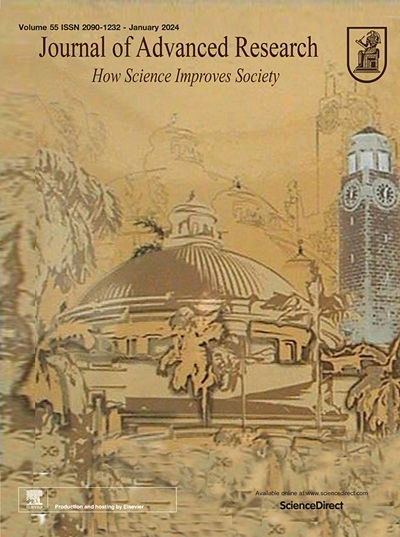组蛋白去乙酰化酶通过 CDK6/ID2 轴促进自身免疫性葡萄膜炎中 Th17 细胞的分化和致病性。
IF 13
1区 综合性期刊
Q1 MULTIDISCIPLINARY SCIENCES
引用次数: 0
摘要
简介自身免疫性葡萄膜炎(AU)是一种常见的眼部自身免疫性疾病,可导致严重的视力损伤。然而,开发更有效疗法所需的自身免疫性葡萄膜炎潜在发病机制仍不清楚:方法:我们分离了AU患者的外周血单核细胞(PBMC),并进行了单细胞RNA测序(scRNA-seq)。此外,我们还建立了实验性自身免疫性葡萄膜炎(EAU)模型,并用组蛋白去乙酰化酶抑制剂(HDACi)贝利诺司他或载体进行治疗。我们提取了空白小鼠、EAU小鼠和HDACi处理的EAU小鼠的免疫细胞,并使用scRNA-seq、流式细胞术、siRNA、特异性抑制剂和收养性转移实验来探讨HDACs及其下游潜在分子机制在EAU和AU免疫反应中的作用:结果:我们发现组蛋白去乙酰化酶(HDACs)家族在AU患者中高表达,并确定其是AU发病机制中与CD4+效应T细胞分化相关的关键因素。我们的进一步研究表明,靶向抑制HDACs能有效缓解EAU,恢复Th17/Treg平衡,减少炎症基因表达,尤其是CD4+ T细胞。HDACs抑制后,Treg比例增加,免疫调节作用增强。重要的是,HDACs 对 Th17 细胞有积极的促进作用。基于scRNA-seq筛选以及体外和体内敲除siRNAs和特异性抑制剂的应用,我们发现CDK6是HDAC1/3/6通过乙酰组蛋白H3/p53/p21轴调控的一个关键下游分子,它参与了Th17致病性和EAU的发展。此外,HDACs调控的CDK6与ID2形成正循环,诱导PIM1上调,促进Th17细胞分化和致病性,并与AU进展相关:基于临床样本筛选和下游分子功能验证实验,我们揭示了HDACs和HDACs调控的CDK6/ID2轴在AU的Th17细胞分化和致病性中的驱动作用,提出了一种有前景的治疗策略。本文章由计算机程序翻译,如有差异,请以英文原文为准。

Histone deacetylases facilitate Th17-cell differentiation and pathogenicity in autoimmune uveitis via CDK6/ID2 axis
Introduction
Autoimmune uveitis (AU) is a prevalent ocular autoimmune disease leading to significant visual impairment. However, underlying pathogenesis of AU required to develop more efficient therapy remain unclear.
Methods
We isolated peripheral blood mononuclear cells (PBMCs) from AU patients and performed single-cell RNA sequencing (scRNA-seq). Besides, experimental autoimmune uveitis (EAU) model was established and treated with histone deacetylase inhibitor (HDACi) Belinostat or vehicle. We extracted immune cells from Blank, EAU, and HDACi-treated EAU mice and used scRNA-seq, flow cytometry, siRNA, specific inhibitors, and adoptive transfer experiments to explore the role of HDACs and its downstream potential molecular mechanisms in the immune response of EAU and AU.
Results
We found highly expressed histone deacetylases (HDACs) family in AU patients and identified it as a key factor related to CD4+ effector T cell differentiation in the pathogenesis of AU. Our further studies showed that targeted inhibition of HDACs effectively alleviated EAU, restored its Th17/Treg balance, and reduced inflammatory gene expression, especially in CD4+ T cells. Post-HDACs inhibition, Treg proportions increased with enhanced immunomodulatory effects. Importantly, HDACs exhibited a positive promoting role on Th17 cells. Based on scRNA-seq screening and application of knock-down siRNAs and specific inhibitors in vitro and vivo, we identified CDK6 as a key downstream molecule regulated by HDAC1/3/6 through acetyl-histone H3/p53/p21 axis, which is involved in Th17 pathogenicity and EAU development. Additionally, HDACs-regulated CDK6 formed a positive loop with ID2, inducing PIM1 upregulation, promoting Th17 cell differentiation and pathogenicity, and correlates with AU progression.
Conclusion
Based on the screening of clinical samples and downstream molecular functional validation experiments, we revealed a driving role for HDACs and the HDACs-regulated CDK6/ID2 axis in Th17 cell differentiation and pathogenicity in AU, proposing a promising therapeutic strategy.
求助全文
通过发布文献求助,成功后即可免费获取论文全文。
去求助
来源期刊

Journal of Advanced Research
Multidisciplinary-Multidisciplinary
CiteScore
21.60
自引率
0.90%
发文量
280
审稿时长
12 weeks
期刊介绍:
Journal of Advanced Research (J. Adv. Res.) is an applied/natural sciences, peer-reviewed journal that focuses on interdisciplinary research. The journal aims to contribute to applied research and knowledge worldwide through the publication of original and high-quality research articles in the fields of Medicine, Pharmaceutical Sciences, Dentistry, Physical Therapy, Veterinary Medicine, and Basic and Biological Sciences.
The following abstracting and indexing services cover the Journal of Advanced Research: PubMed/Medline, Essential Science Indicators, Web of Science, Scopus, PubMed Central, PubMed, Science Citation Index Expanded, Directory of Open Access Journals (DOAJ), and INSPEC.
 求助内容:
求助内容: 应助结果提醒方式:
应助结果提醒方式:


